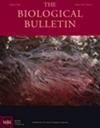自然屏障对巴西东南部两河两栖对虾(虾亚目,虾科)的影响
IF 1.9
4区 生物学
Q2 BIOLOGY
引用次数: 1
摘要
在沼泽环境中,淡水对虾的洄游行为可能受到自然屏障的影响。本研究评估了被瀑布等自然屏障分隔的河流区域对双虾种群特征和繁殖方面的影响。结果表明,在巴西东南部的fsamlix河和Prumirim河中,虾在采样区域的差异不大,这些差异可能与瀑布没有因果关系。这可以从每个地区的大小和性别比例没有模式以及在大多数生殖方面没有显著差异来证明。所有采样区域的幼鱼和生殖个体的存在强烈表明两条河流中沿它们不断迁移,表明所有评估的个体对应于每条河流的单一斑块种群结构。巴西虾的这种迁移行为,如爬行行为,表明在该虾群中保持不同河流采样区域之间流动的最小个体数量是很重要的。因此,基于在巴西虾中观察到的一个有用的模型,结果有助于我们了解自然屏障如何影响两栖虾的种群,以及上游和下游的迁移行为如何帮助维持种群。这个前提可以帮助未来的建设决策和非自然屏障的影响,如水坝。本文章由计算机程序翻译,如有差异,请以英文原文为准。
The Influence of Natural Barriers on the Amphidromous Shrimp Potimirim brasiliana (Caridea, Atyidae) from Two Rivers in Southeastern Brazil
The migratory behavior of freshwater shrimps may be affected by natural barriers in limnetic environments. This study evaluated the river areas separated by natural barriers, such as waterfalls, which affect the amphidromous shrimps’ (Potimirim brasiliana) population features and reproductive aspects. Results indicate that in the Félix and Prumirim Rivers from southeastern Brazil shrimps show few differences in sampling areas, and these differences may not be causally related to the waterfalls. This is demonstrated by the absence of a pattern in the size and sex ratio in each area and the absence of a significant difference in most reproductive aspects. The presence of juveniles and reproductive individuals in all sampling areas strongly indicates a constant migration along them in both rivers, indicating that all individuals evaluated correspond to one single patchy population structure for each river. This migration conducted by P. brasiliana, such as its crawling behavior, demonstrated that it would be important to maintain the minimum number of individuals flowing between the different river sampling areas in this shrimp group. Thus, based on a helpful model observed in P. brasiliana, the results help us understand how natural barriers may affect the populations of amphidromous shrimp and how the migration behavior up- and downstream can help sustain the population. This premise can help future construction decisions and impacts of unnatural barriers, such as dams.
求助全文
通过发布文献求助,成功后即可免费获取论文全文。
去求助
来源期刊

Biological Bulletin
生物-海洋与淡水生物学
CiteScore
3.30
自引率
6.20%
发文量
47
审稿时长
6-12 weeks
期刊介绍:
The Biological Bulletin disseminates novel scientific results in broadly related fields of biology in keeping with more than 100 years of a tradition of excellence. The Bulletin publishes outstanding original research with an overarching goal of explaining how organisms develop, function, and evolve in their natural environments. To that end, the journal publishes papers in the fields of Neurobiology and Behavior, Physiology and Biomechanics, Ecology and Evolution, Development and Reproduction, Cell Biology, Symbiosis and Systematics. The Bulletin emphasizes basic research on marine model systems but includes articles of an interdisciplinary nature when appropriate.
 求助内容:
求助内容: 应助结果提醒方式:
应助结果提醒方式:


